Whether you had to read any of these unnerving books in school, or they were recommended by a friend, chances are as geeks we came across quite a few of them, and probably when we were just a little too young for them. Contributor Theresa Romano dissects a few, each with unique ability to brand a level of discomfort into our hearts, but still memorable favorites.
Yes, there are spoilers for all books concerned.
Brave New World
Aldous Huxley’s Brave New World brings the disturbing factor to a whole ‘nother level. With horrifying themes of losing one’s identity in a vast global society – The World State – and manufacturing a disposable human race, this dystopia will have anyone wondering what the future holds. In the novel, children are genetically engineered and encouraged to partake in sexual acts (yes, this is actually in the book; marriage and natural birth are regarded as pornographic), as well as being given a designated place in a rigid caste system that dictates their station in society.
And if this is all too much for you, The World State endorses a drug called “soma” to keep everyone doped up, happy and under their thumb. But it isn’t until John the Savage – the result of a natural childbirth from his World State mother turned “savage” who forgot to take her birth control – encounters Bernard and Lenina, two World Staters (that’s what I call them, you like?) on a trip outside the confines of their utopia, that things get weird. John immediately falls head over heels for Lenina, and that’s when everything basically hits the fan. Out of all the other characters, he’s actually the only normal, free-thinking individual in the book. In an unfortunate turn of events, John begins whipping himself, taking the drug soma and engages in an orgy – which ultimately results in his suicide. This leaves the other World Staters completely confused, yet fascinated by his self-inflicted demise.
Geeky Observation: You can find a reference to Brave New World in The Strokes’ song “Soma” from their 2001 debut album, Is This It? which is basically a summary of the drug and the book. Check out other bands that have songs entitled “Soma,” including The Smashing Pumpkins.
Catcher in the Rye
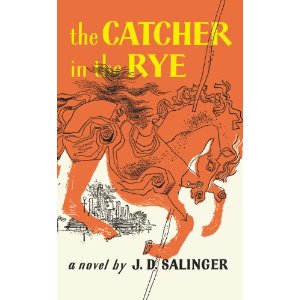 Ah, J.D. Salinger’s Holden Caulfield. He makes most angst-ridden teens look like happy-go-lucky cub scouts. He practically brought the word “phony” back into existence and he’s a teen icon – with some going as far to call him a revolutionary figure; slap Caulfield’s face on a t-shirt and call him Che (that’s if we even knew what this kid looked like).
Ah, J.D. Salinger’s Holden Caulfield. He makes most angst-ridden teens look like happy-go-lucky cub scouts. He practically brought the word “phony” back into existence and he’s a teen icon – with some going as far to call him a revolutionary figure; slap Caulfield’s face on a t-shirt and call him Che (that’s if we even knew what this kid looked like).
The novel follows Caulfield after he is kicked out of prep school. Instead of going back home, he spends his time in New York, traipsing about the city trying to find something to do.
The kid turns out to be a real sad sack and kind of boring, but that doesn’t mean he doesn’t get himself into some questionable situations. Case in point: when Caulfield goes to visit and spend the night with his old teacher Mr. Antolini. While Caulfield was looking for some guidance, Mr. Antolini might of had something else on his mind. After having one too many highballs, he finds his old teacher patting his head one too many times during the night; it is still uncertain as to whether or not Mr. Antolini was coming on to Holden.
Or lest we forget his memorable encounter with Sunny the prostitute, where, after all the fuss, he breaks down and would rather talk to her and see her for the real person she is – which is totally not in her job description. After that, Caulfield has some sort of epiphany at the zoo with his sister Phoebe and realizes he needs help. Ya think? Back to school, or in his case, the mental hospital, Caulfield.
Geeky Observation: The book and its main character Holden Caulfield are also mentioned in numerous songs including the less than ambiguous Guns N’ Roses song “Catcher in the Rye,” Green Day’s “Who Wrote Holden Caulfield?” and Billy Joel’s “We Didn’t Start the Fire.”
The Giver
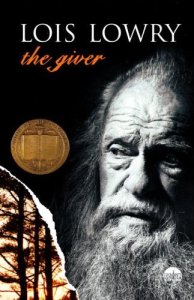 Written by Lois Lowry in the early 90s, The Giver is another novel taking place in a futuristic society where pain, such as emotional hardships and feelings in general, are stripped from human lives by means of the “Sameness” plan. Nuclear-type families are encouraged, and those with unique skills are given special positions in society.
Written by Lois Lowry in the early 90s, The Giver is another novel taking place in a futuristic society where pain, such as emotional hardships and feelings in general, are stripped from human lives by means of the “Sameness” plan. Nuclear-type families are encouraged, and those with unique skills are given special positions in society.
The main character is a twelve-year-old boy named Jonas and, given his ability to see colors and hear music, he is given the position of “Receiver of Memory” – which basically means he is granted access to all the memories and knowledge prior to the “Sameness” plan’s implementation. Jonas the Receiver soon meets The Giver who teaches him, or rather lets him know, about the world outside his community.
After learning of these truths, Jonas is compelled to leave which will result in his memories being released into the minds of the society’s inhabitants. Becoming more aware and cynical of his sheltered life, he learns what happens to those that are born under their “Sameness” plan. Jonas’ father is a Nurturer and is charged with caring for the newborns. In one scene, Jonas watches as his father lovingly tends to a a pair of twin infants, but is horrified to discover him administering a lethal injection to the head of one of the twin boys, disposing of his lifeless body like common trash. Jonas makes his escape from the world he thought he knew with another small, gifted boy named Gabe. Again, the ending is ambiguous with the two young boys sledding down a hill and hearing nearby music, leaving their fate open to interpretation.
Geeky Observation: Lois Lowry wrote two more books that follow The Giver, Gathering Blue and Messenger. In Messenger, the characters Jonas and Gabe are mentioned again, eluding to their plausible survival in The Giver.
Ethan Frome
 This novel written by Edith Warton can only be best described as that one friend everyone has that manages to put a damper on a good time, but you endure the pain because you have some level of loyalty to your friend. Complicated? Yeah, well this book is pretty much just like that. It follows the main character Ethan Frome – another sad excuse for a human being – who has fallen in love with his wife Zeena’s more attractive cousin Mattie.
This novel written by Edith Warton can only be best described as that one friend everyone has that manages to put a damper on a good time, but you endure the pain because you have some level of loyalty to your friend. Complicated? Yeah, well this book is pretty much just like that. It follows the main character Ethan Frome – another sad excuse for a human being – who has fallen in love with his wife Zeena’s more attractive cousin Mattie.
The book is full of flashbacks and symbolism, all centering around the idea that Ethan doesn’t have the courage to actually tell his miserable wife Zeena that he loves Mattie and not her. He finally grows a pair in the end when Zeena discovers their attraction to one another and has plans of sending Mattie away. In a desperate attempt, Mattie and Ethan share a passionate kiss and decide to go sledding, of all things, which was something that they always wanted to do. Mattie – who turns out to be the next candidate for “Little Miss Suicide” – convinces Ethan to run the sled they are both riding into a tree, which is somehow supposed to be some romantic gesture of spending their last moments together. In the end, they both actually survive, with Ethan having to take care of both Mattie – who became paralyzed from the nasty spill – and his lovely wife Zeena. Talk about awkward!
Geeky Observation: If you feel like you’re having a moment of deja vu, you are. The Giver’s ending involved a tragic sled ride, too. I guess sledding is a popular way to die in literature.
A Separate Peace
 This John Knowles novel takes place during the 1940s in New England with numerous wartime and nature related metaphors. We are introduced to two prep school chums, Gene and Finny. The two boys go through a tumultuous friendship, if that’s what you’d call it, and partake in “Super Suicide Society” activities, involving dangerous games like jumping into a river from tall trees and Finny creating the violent game “blitzball” – a combination of soccer and football in which no one actually wins. Cute kids, huh?
This John Knowles novel takes place during the 1940s in New England with numerous wartime and nature related metaphors. We are introduced to two prep school chums, Gene and Finny. The two boys go through a tumultuous friendship, if that’s what you’d call it, and partake in “Super Suicide Society” activities, involving dangerous games like jumping into a river from tall trees and Finny creating the violent game “blitzball” – a combination of soccer and football in which no one actually wins. Cute kids, huh?
After some major brooding sessions, Gene becomes extremely jealous of Finny and his athletic abilities, with him “accidentally” pushing his friend down a marble staircase in a fit of rage. Finny suffers from a broken leg, but, in a sick twist of events, unexpectedly dies during the operation to reset the bone. Gene, in the end, is uncomfortably okay with Finny’s death and makes it all about him since he feels Finny’s death took away his anger for him. Best friends forever!
Geeky Observation: A group of students from St. Joseph’s Convent in Port of Spain, Trinidad came up with a game also called “blitzball” that involves an aluminum foil ball being constantly thrown in the air. The object of the game is to not let the aluminum ball hit the ground while sitting in a circle.
Blitzball can also be seen in the video games Final Fantasy X and Final Fantasy X-2, which is somewhat similar to the way Gene and Finny play the game.
Lord of the Flies
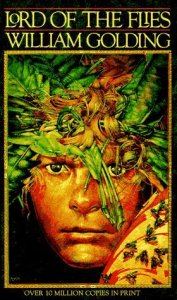 William Golding’s Lord of the Flies is the novel that most kids in high school have to read at some point, eventually adding it to their favorite books section on their Facebook profile’s ‘About Me’ tab in a vein attempt to aim for poignancy. As entertaining as the novel is, there are plenty of memorable yet disturbing events that would have any choir boy paranoid to ever fly in a plane with his mates.
William Golding’s Lord of the Flies is the novel that most kids in high school have to read at some point, eventually adding it to their favorite books section on their Facebook profile’s ‘About Me’ tab in a vein attempt to aim for poignancy. As entertaining as the novel is, there are plenty of memorable yet disturbing events that would have any choir boy paranoid to ever fly in a plane with his mates.
With enough metaphors to keep an English grad student working on his/her thesis until their mid-thirties, Lord of the Flies goes to show how dangerous a deserted island can be. Forget the name calling – poor, asthmatic Piggy – these kids are hardly on the island that long before they start becoming little savages and engage in pagan rituals – such as leaving offerings to the “beast” of the island.
The most disturbing events have to be what happens to poor, crazy Simon and Piggy. After Simon starts to hear the pig head on a stick talk, and learns that the “beast” is really the remains of a dead parachutist, he goes to tell the others, but is savagely slaughtered during the boys’ ritualistic dance. Piggy, on the other hand, falls to his death off the side of a mountain from a boulder that was thrown by one of the other boys while Jack and Ralph were fighting. But the real icing on the cake is when the boys are finally rescued by a naval officer who refers to their little murders as “fun and games.” Until he learns what really has happened and deplores their actions, making the boys cry.
Geeky Observation: One cannot help but elude to The Simpsons parody of the Lord of the Flies in the episode “Das Bus” during Season 9. Also, many fans of the book like to recite memorable lines including “Sucks to your ass-mar,” in regards to the other boys’ indifference to Piggy’s asthma. Urban Dictionary describes that it can be used in a situation where a phrase like “Sucks to be you” would be appropriate. Also, you must say it with a British accent to add authenticity.
Animal Farm
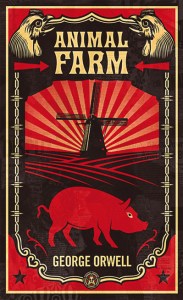 There’s really nothing more disturbing than a talking animal. But when you add revolutionary thinking and utopian ideals to the equation, things really start to get creepy. While Babe the pig oinked and sang, Old Major spoke of the evils of human kind and introduced the ideology of “Animalism” to the barn. Soon, the humans are forced from their own farm, and Animal Farm is open for business. Things soon begin to go sour at Animal Farm; three pigs – Snowball, Napoleon and Squealer – pick up where Old Major left off, but soon find themselves conspiring against one another and taking on the characteristics of humans. Napoleon is found to be sleeping in beds and acquiring a drinking problem, as well as selling Boxer – a loyal and hard-working horse on the farm – to a glue factory for some whiskey!
There’s really nothing more disturbing than a talking animal. But when you add revolutionary thinking and utopian ideals to the equation, things really start to get creepy. While Babe the pig oinked and sang, Old Major spoke of the evils of human kind and introduced the ideology of “Animalism” to the barn. Soon, the humans are forced from their own farm, and Animal Farm is open for business. Things soon begin to go sour at Animal Farm; three pigs – Snowball, Napoleon and Squealer – pick up where Old Major left off, but soon find themselves conspiring against one another and taking on the characteristics of humans. Napoleon is found to be sleeping in beds and acquiring a drinking problem, as well as selling Boxer – a loyal and hard-working horse on the farm – to a glue factory for some whiskey!
Soon the pigs even begin to start walking erect, socializing with humans and even dressing in human clothing. All metaphors of socialism and communist revolutionary figures aside, Animal Farm would have any farmer who reads this giving old Betsy the cow seconds, even thirds, at feeding time.
Geeky Observation: In the original Hallmark Entertainment movie adaptation of the book, they have “Animal Farm” painted on the front of the gate, with the letters “N,” “R,” and “L” spelled backwards – how cute! Don’t forget, Kelsey Grammer was the voice of Snowball and Julia Louis-Dreyfuss voiced Mollie.
Theresa Romano blogs, or Tumbls, here.



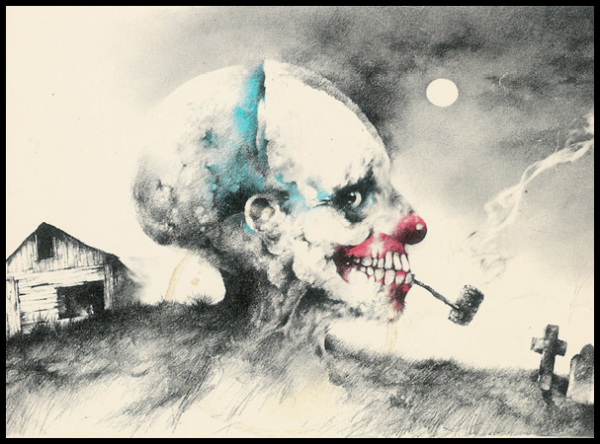
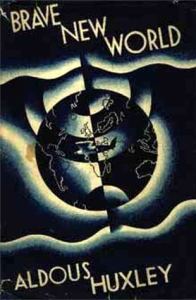





Published: May 12, 2011 12:55 pm